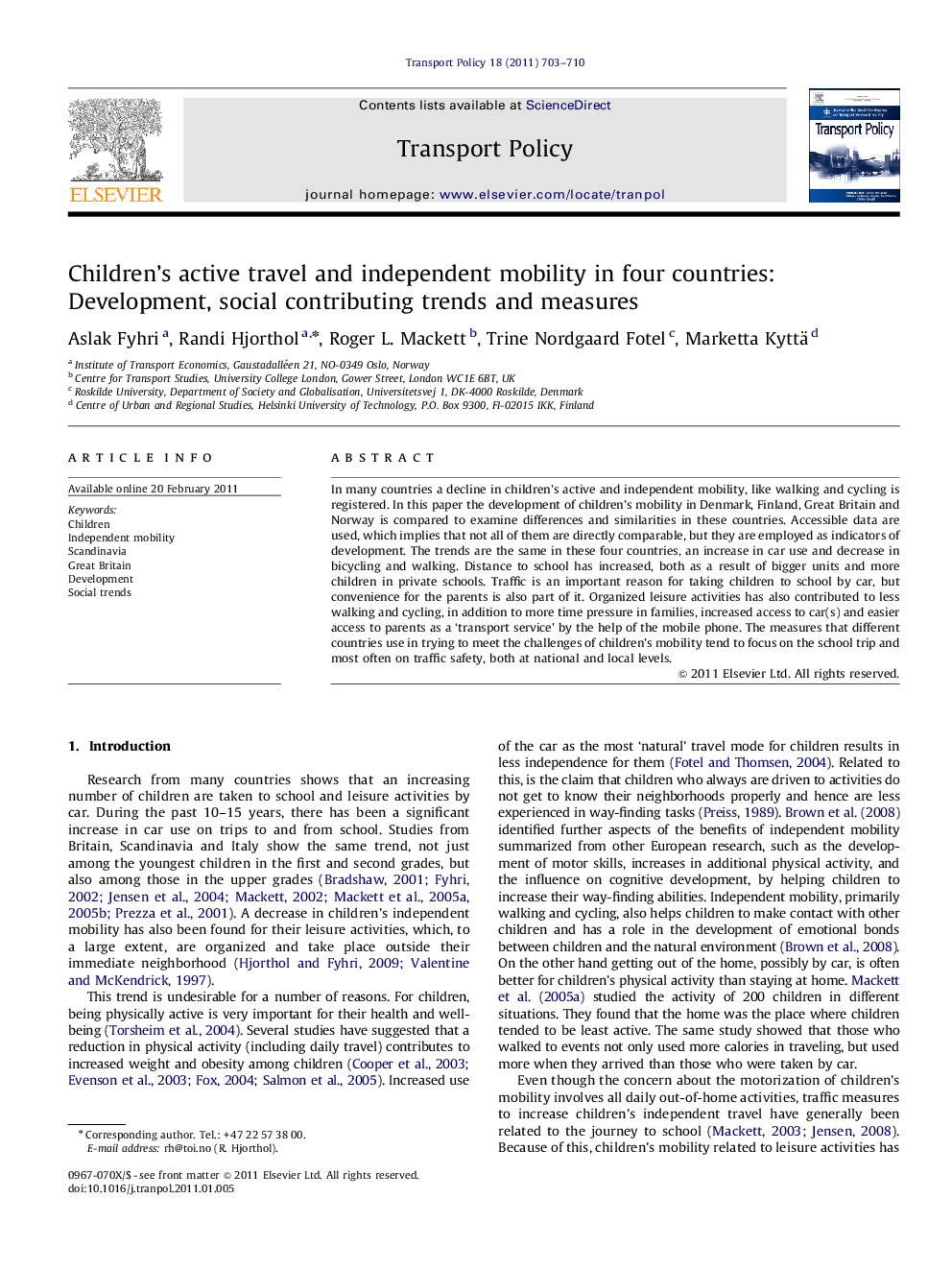| Article ID | Journal | Published Year | Pages | File Type |
|---|---|---|---|---|
| 1065117 | Transport Policy | 2011 | 8 Pages |
In many countries a decline in children's active and independent mobility, like walking and cycling is registered. In this paper the development of children's mobility in Denmark, Finland, Great Britain and Norway is compared to examine differences and similarities in these countries. Accessible data are used, which implies that not all of them are directly comparable, but they are employed as indicators of development. The trends are the same in these four countries, an increase in car use and decrease in bicycling and walking. Distance to school has increased, both as a result of bigger units and more children in private schools. Traffic is an important reason for taking children to school by car, but convenience for the parents is also part of it. Organized leisure activities has also contributed to less walking and cycling, in addition to more time pressure in families, increased access to car(s) and easier access to parents as a ‘transport service’ by the help of the mobile phone. The measures that different countries use in trying to meet the challenges of children's mobility tend to focus on the school trip and most often on traffic safety, both at national and local levels.
Research highlights► Independent and active mobility of children are decreasing in both Scandinavia and Great Britain. ► Several social trends contribute to this development. ► Examples are increased car ownership, more organized activities for children, free choice of school. ► Policy measures to meet this challenge are limited and lack a comprehensive perspective.
